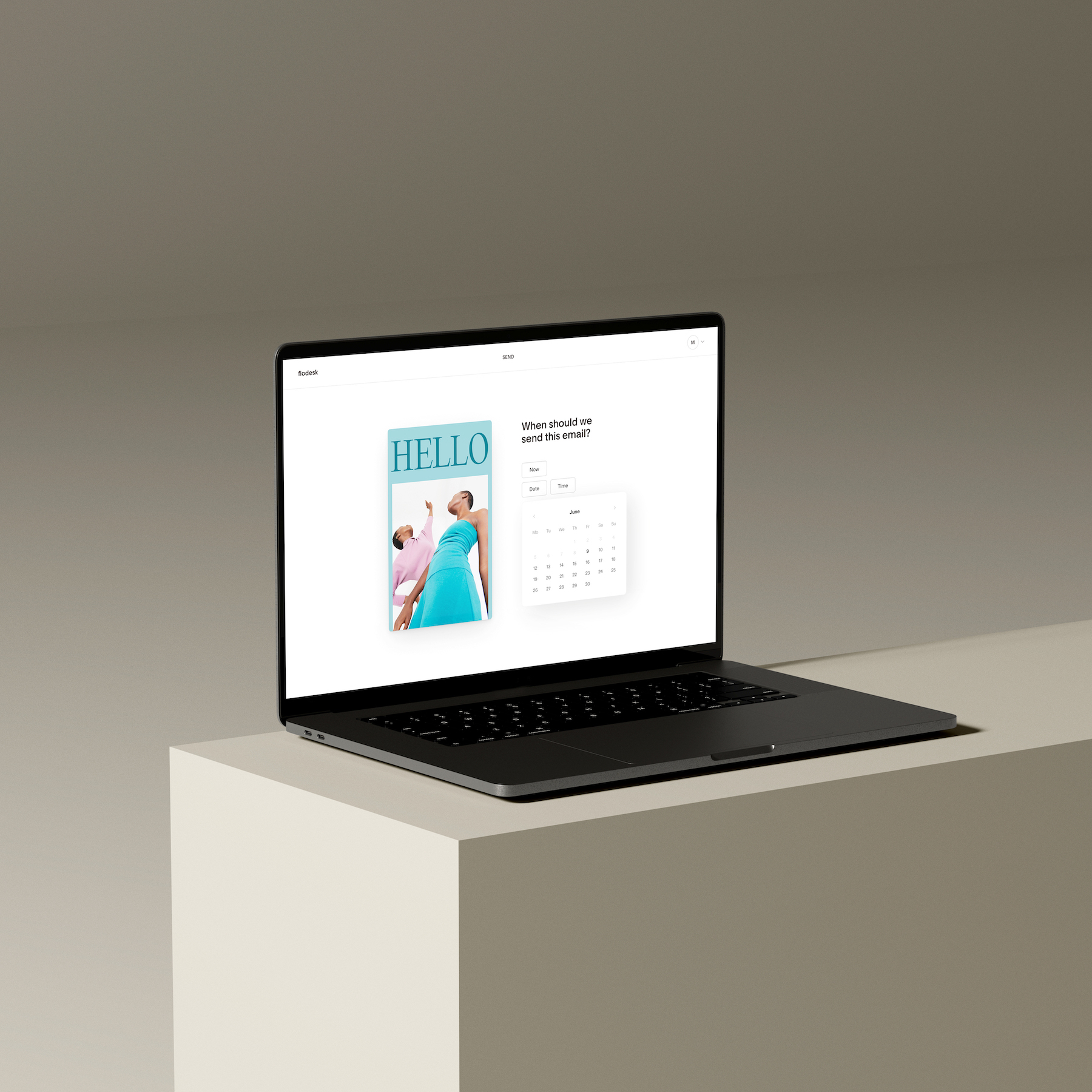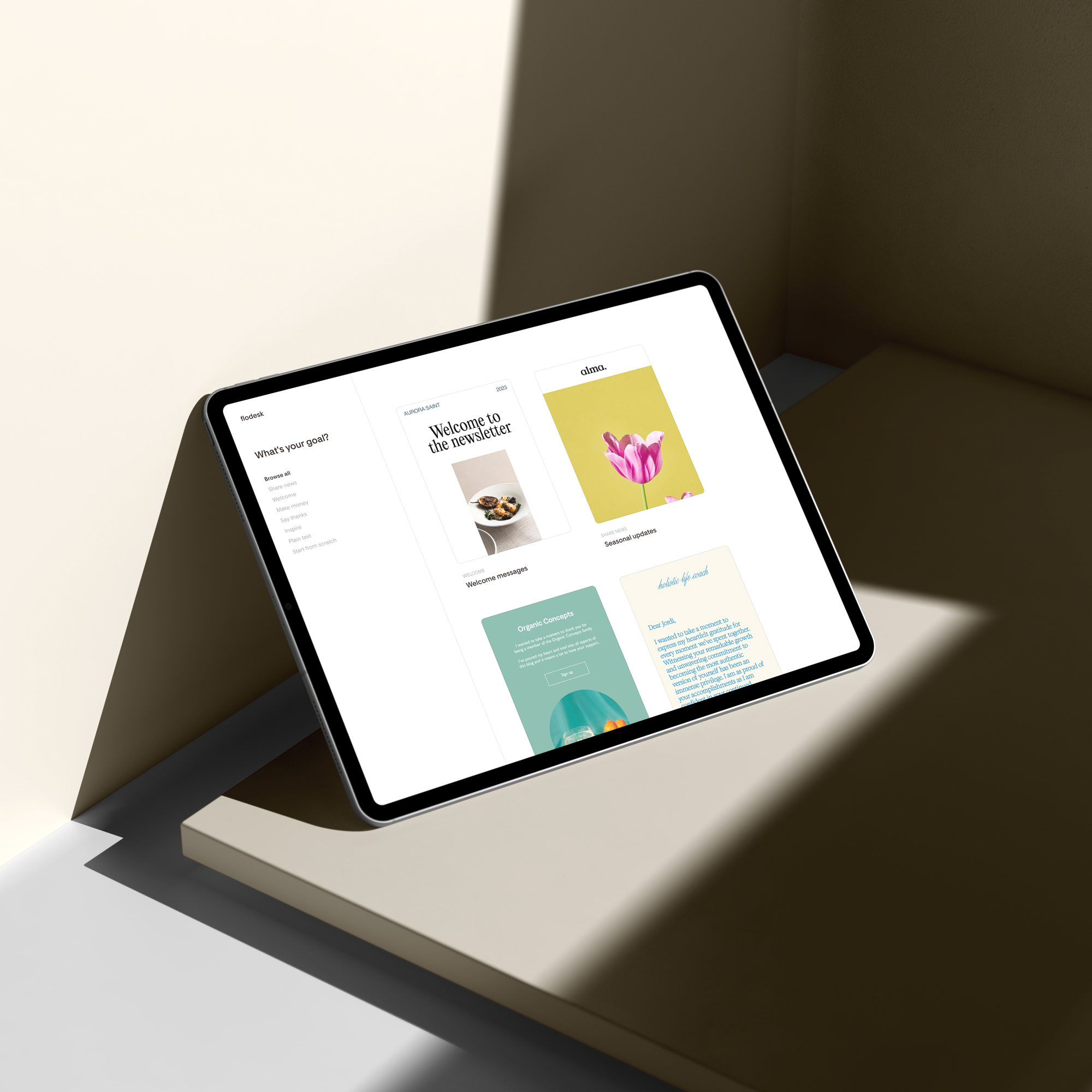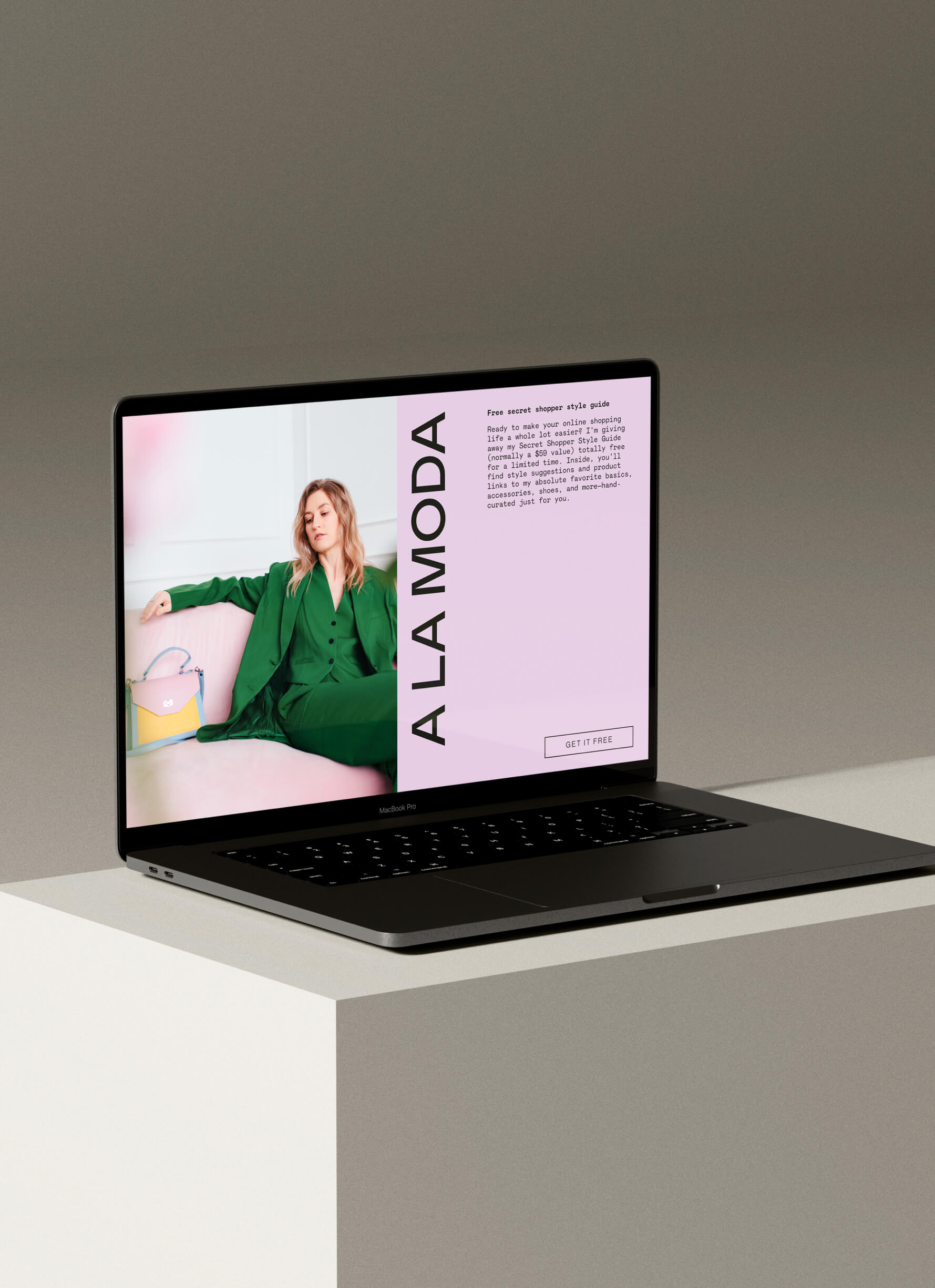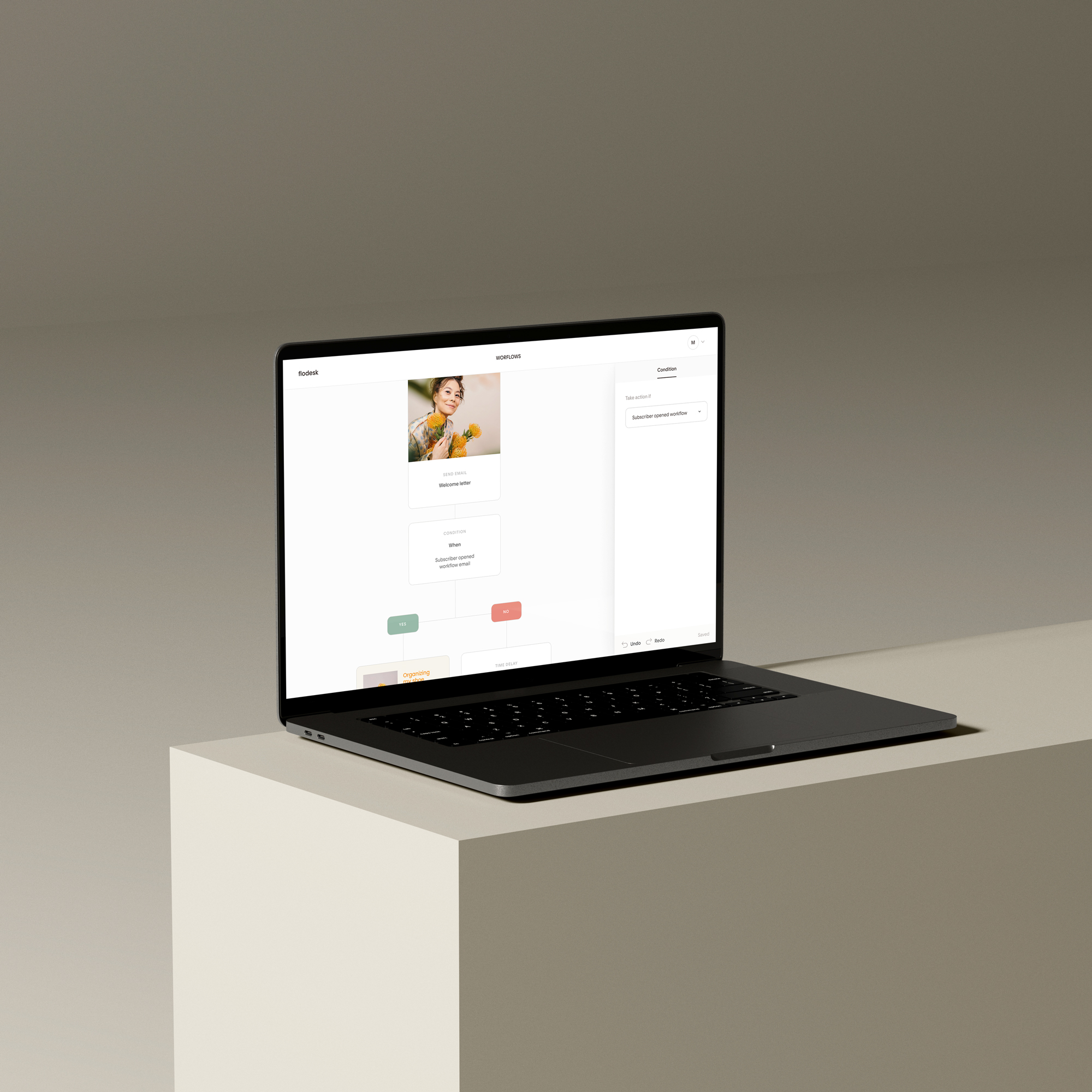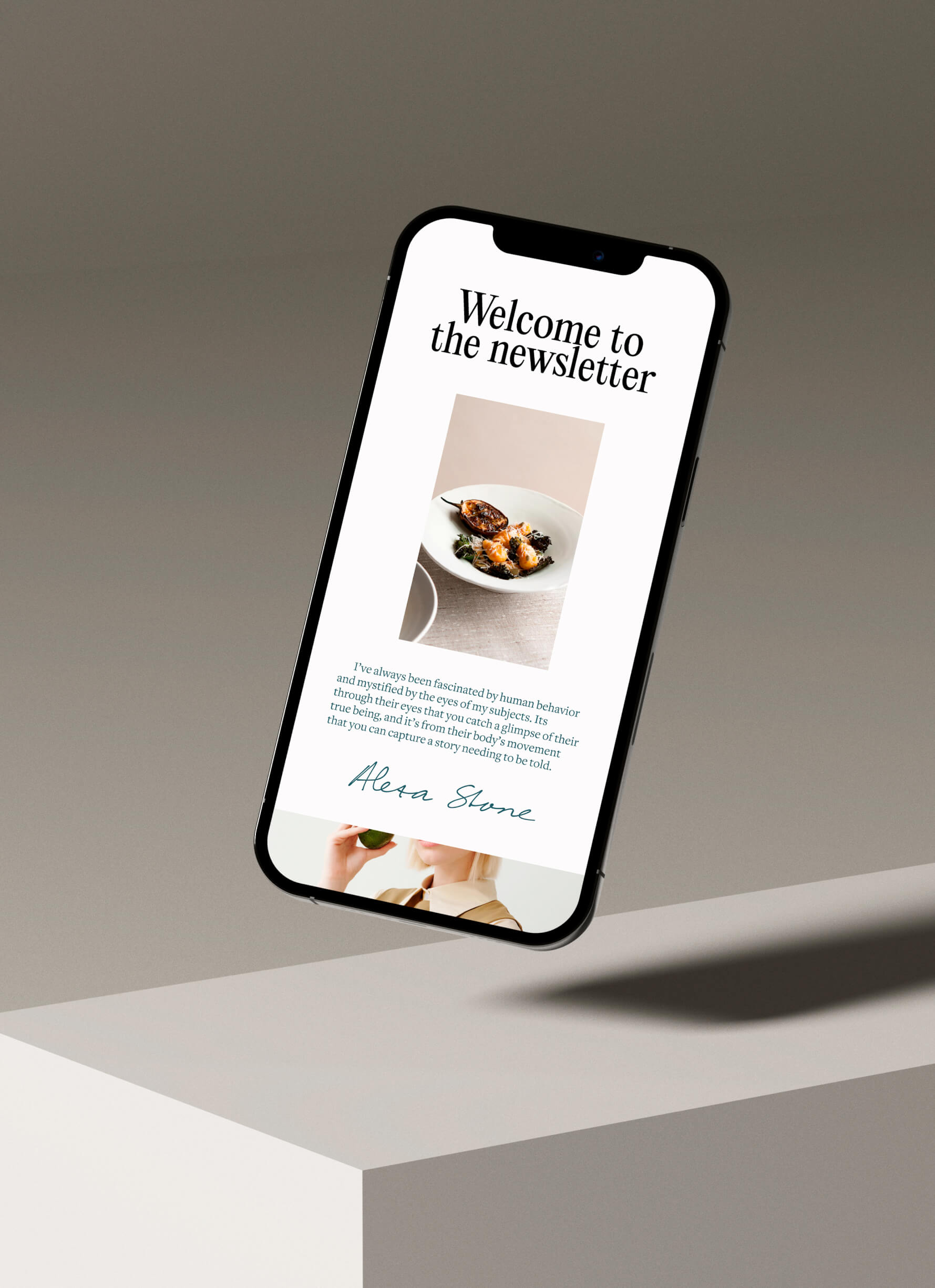30 of your pressing email nurturing questions answered
Table of Contents Jump to:
Jump to:
Table of contents
TL;DR: Start warming your subscribers for sales. How? By nurturing your list. Get answers to your top email nurturing questions—plus actionable strategies and ideas you can use right now.
When you first meet someone, building a relationship with them takes time and effort. The same goes for your subscribers. To boost engagement in the inbox and turn subscribers into buyers, you need to nurture your relationship with them.
Nurturing your email list is crucial because it helps establish strong customer relationships, increase brand loyalty, and drive business growth by warming your existing audience for sales. By building relationships and providing value, you can move subscribers deeper into your sales funnel until they’re ready to buy.
With the holiday sales season looming ahead, it’s important to start nurturing your list now. To help you get started, we’re sharing answers to the 30 email nurturing questions we hear most often and top tips to nurture your list successfully. Let’s jump right in.
Build relationships while you sleep
Automate a personal journey for each subscriber with Flodesk Workflows.
Answers to your top email nurturing questions
1. What is email nurturing, and why does it matter?
Think of email nurturing as a means of delivering consistent value. Rather than relentlessly selling to your list, email nurturing involves sharing valuable content, resources, and engaging messages. It’s crucial for business growth because it helps transform passive subscribers into loyal customers. Studies show that nurtured leads make 47% larger purchases than non-nurtured leads.
Nurturing your email list can:
- Build brand trust
- Establish authority
- Create authentic connections
- Foster engagement
- Keep your brand top of mind
- Warm up your sender reputation, which improves deliverability
2. What are ways I can nurture my list?
To effectively nurture your list, maintain a constant focus on delivering value. Seek opportunities to educate, empower, and engage your audience. There are countless ways you can nurture your list, such as:
- Telling a story your audience can relate to
- Sharing a roundup of industry news or trends
- Answering FAQs and providing solutions
- Sending a quick tutorial that shows your expertise
- Listing your favorite tools and resources
The list goes on and on. As long as you focus on serving before selling, there’s no stopping what you can create.
3. How frequently should I email my list?
There’s no one-size-fits-all answer. The optimal frequency of emails depends on your audience’s preferences, business type, goals, and the content you share. Focus on the quality of content over quantity. Don’t send an email for the sake of sending—establish an email nurturing frequency you can maintain and continuously fill with valuable content over time.
A clever way to ensure your subscribers hear from you as much (or as little) as they like is to include Form Preferences in your opt-in form. This allows your audience to choose how often they want to receive your emails, plus what they want to hear about. Learn how to use Form Preferences.
4. When should I email my list?
The best time for sending emails varies from business to business. To find the best emailing times for your brand, explore your analytics. See which newsletters have performed best and their sending times.
Within Flodesk Analytics, you can easily see this by looking at your “Best days to send emails” and “When subscribers open your emails” heat map charts. You can further optimize the timing of your newsletter sends by:
- Knowing your audience (and their time zones)
- Testing different send times
- Monitoring performance
Seasonality can also play a factor in email performance, so be sure to consider that when analyzing email performance data. For example, Black Friday and Cyber Monday are some of the most congested periods in the inbox. Every brand will be scrambling to win subscribers’ attention, so it may be harder to achieve high open rates and engagement—no matter the timing of your sends.
5. How can I nurture new subscribers?
The best way to nurture new subscribers is with a welcome sequence that introduces them to you, your brand, and the unique value that you offer. Make sure these emails feel personal and engaging to leave a lasting impression.
Here’s an example of a welcome sequence:
Email #1: Say hello and provide a special welcome gift or discount code
Email #2: Introduce yourself and what you do
Email #3: Tell the story behind your brand and why you started your business
Email #4: Share one of your customers’ problems and introduce a paid offer that solves it
6. How can I nurture existing subscribers?
It’s just as crucial to nurture your current subscribers as it is for new subscribers. Consider various ways to serve your existing audience content they won’t find outside the inbox. What exclusive resources, tips, or offers can you provide? How can you personalize the experience?
Consider segmenting your email list based on your audiences’ interests to deliver targeted, relevant messages for each subscriber. Here are a few examples of ways you can nurture your existing subscribers:
- Deliver a valuable tutorial video
- Curate a list of your top tools and resources
- Share insider brand news and updates
- Provide early access to an upcoming promotion
7. What is the optimal email length for nurturing subscribers?
Optimal email length differs greatly depending on your industry and audience. Some businesses see remarkable results from long-form email content, while others have greater success with short, succinct emails. It’s best to analyze your email performance to understand what email length is most effective at engaging your subscribers.
In general, we recommend keeping your emails short and snappy. Aim for concise and to-the-point copy, but don’t be afraid to be lengthier if the content demands it.
8. What email designs get the best results?
Email designs that are mobile-friendly and visually appealing—think clean, eye-catching designs with clear calls-to-action (CTAs).
You can design emails people love to get with Flodesk’s stunning selection of email templates. The intuitive drag-and-drop builder makes it easier than ever to customize each template to match your brand, personalize content, and create brilliant designs. Try it free.
Design emails people love to get
Create gorgeous emails with Flodesk and build deep relationships with your subscribers.
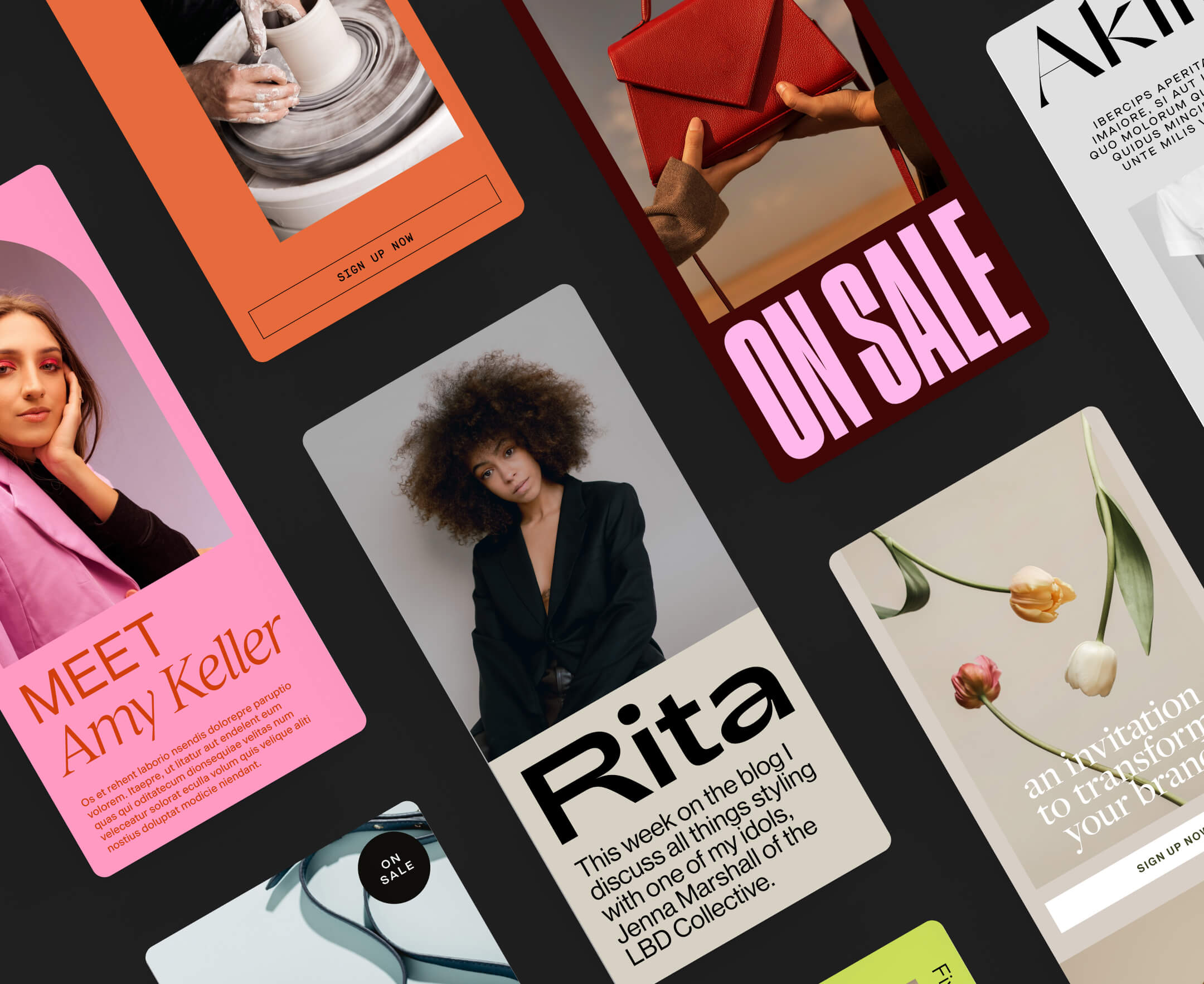
9. How can I increase my email open rates?
The best way to boost your email open rates is with attention-grabbing subject lines that stand out in a crowded inbox and pique subscribers’ curiosity. While there are countless ways to craft compelling subject lines, some of our top recommendations are to:
- Keep them short. Make sure your subscribers read your entire subject line by keeping it under 50 characters
- Add an emoji to stand out. But avoid using lots of exclamation points or CAPITALIZING entire words
- Use action words. Try saying, “Open now to see what you missed” instead of, “Here’s a summary of what you missed”
- Create urgency. Use phrases like “hurry—save your spot” or “ending soon.” Being direct is great for conversion
- Personalize your subject line. Type “@” to insert a subscriber’s first name for a personal touch, like “Hey Rebecca, I’ve got news for you”
For more inspiration, explore 40 brilliant newsletter subject line examples.
10. How can I increase my email click-through rates?
Increase your click-through rates with CTAs that drive subscribers elsewhere—to your website, blog, social media profile, checkout page, and more. Strategically place your CTAs throughout your email and use action-oriented language, like “Learn more” or “Discover the secret” to drive more clicks to your email buttons or links.
Ensure your CTAs pop on the page by using contrasting colors or bolded typefaces to differentiate your links from other email content. Experiment with CTA placement to see if positioning influences your email click-through rates. Try including multiple CTAs throughout your email—above the fold and at the bottom.
11. How many CTAs should I include in my emails?
We recommend including at least one CTA in every email. You can use one primary CTA throughout your email or include multiple CTAs. However, we recommend limiting the number of CTAs you have in each email. Encouraging too many button or link clicks may confuse readers or stop them from taking action altogether.
12. How can I stand out in the inbox?
Hook subscribers with a captivating subject line that prompts swift email opens. Then, wow them even further with a gorgeous email design that keeps them scrolling the whole way through.
Your emails should reflect your brand’s unique personality and style. Use creative visuals, compelling stories, and exclusive content to help your sends stand out from the masses. By consistently delivering a branded experience packed with value, your subscribers will be eagerly awaiting your next email.
13. How can I turn subscribers into customers?
By consistently nurturing your list and building brand trust. When you prioritize understanding subscribers’ needs and serving your audience, you can offer genuine guidance and solutions to their problems, ultimately transforming subscribers into sales.
Explore ways to nurture your list consistently, like implementing a nurture email sequence or launching a bi-weekly newsletter. If you plan to promote an upcoming sale or offer, look for opportunities to provide subscribers with relevant nurturing content, like educational blog posts or customer testimonials, in the weeks leading up to the promotion.
Experiment with various newsletter formats and see what your subscribers engage with best. Try implementing videos, images, and GIFs into your email newsletter. Use interactive elements, like a fun poll or quiz, to boost subscriber engagement. You can even encourage subscribers to reply to your email to foster two-way communication and more meaningful relationships (while boosting your sender reputation in the process).
15. How can I convey my personality in email?
Start by writing content that reflects your brand’s tone and voice. Use language that feels conversational and human, letting your personality shine through. Share personal anecdotes and experiences to create authentic connections with your subscribers.
You can also showcase your personality with fun GIFs, brand photography, and colors. Get lost in a creative flow and discover what you can do. The world needs what you’ve got.
16. How can I make my emails feel authentic and genuine?
Have we mentioned providing value? Not to sound like a broken record, but delivering genuine value helps build trust, which in turn fosters authentic relationships. Avoid sounding overly stiff or sales-y. Use copy, imagery, and branding to create an engaging email experience your subscribers will love.
Share your personal successes and failures to show your audience your humanness. Geek out on educational content you know will help your audience overcome their problems. Celebrate your customer testimonials and triumphs. Prioritize adding value to subscribers’ lives; your authenticity will shine through.
If you’re a service-based business, you know just how important it is to build meaningful relationships with your audience. Your customers aren’t just buying a service—they’re buying a solution. Services often require customers to make an investment, whether it’s their time, money, or both. An investment demands an extra level of relationship-building because in order to convert customers, your audience needs to feel seen, heard, and confident in your brand.
To nurture subscribers as a service-based business, look for opportunities to showcase the solutions you offer and build your credibility—by featuring relevant tips, resources, and results.
For example, if you own a photography business, you can create newsletters that include:
- Glowing customer testimonials
- A link to your website portfolio
- Blog posts about photography
- A roundup of your go-to photography tools
- Personal updates that showcase your passion and personality
The content possibilities are endless.
If you’re a product-based business, you can use your email newsletters to share relevant content that incorporates your product offerings without coming across as too sales-y. Consider engaging ways to feature your products, such as:
- Behind-the-scenes glimpses of how your products are made
- Seasonally curated product collections
- User-generated content featuring your products
- Free bonus tutorials or tips that complement a paid product
19. What are best practices to get subscribers to believe in what I’m offering?
Consistency is key. Just like any great relationship, building trust takes time—and by delivering value, authenticity, and transparency to your subscribers consistently, you can foster brand loyalists. Try sharing case studies, success stories, and social proof to demonstrate the real impact of your offerings.
20. Where can I direct my subscribers if I don’t have a website?
You don’t need a website to create compelling emails. You just need a place where readers can continue learning, engaging, and purchasing from your brand. Direct subscribers onwards to your brand touchpoints, such as your:
- Booking calendar
- Social profiles
- Podcast or playlists
If you’d like to promote a paid offer but don’t yet have a website, try Flodesk Checkout—beautiful sales pages, online payments, and instant product delivery all in one place. Get started for free.
21. What’s the best way to maintain consistency when nurturing my subscribers?
Consistency builds trust and keeps your audience engaged—but maintaining it is no easy feat. The best way to remain consistent is to develop a strong email nurturing strategy. Determine how frequently you plan to send nurturing emails and when. Will you send a recurring email newsletter, seasonal emails, or periodic email nurturing sequences? Once you know when you’ll send emails, you can carve out time to determine what you’ll send.
We recommend blocking time on your calendar each week, month, or quarter to create content for upcoming emails. Plan ahead and schedule emails in advance to ensure you’re continuously providing value.
Strapped for time? If so, you’re not alone. Cody Hays, Founder of Marketing Mission, says, “I struggled to find an hour each week to create an email. My team and I developed a year’s worth of newsletters over three weeks and used Workflows to automate sending them. Now, new subscribers are automatically added to my nurture sequence, and I can keep in touch with my audience every week.” Learn how Cody batched a year’s worth of nurturing emails in advance, leading to a single email resulting in $61,000 in sales.
Pro tip: Craft meaningful emails in minutes with Flodesk templates. Choose your favorite template, start from scratch, or duplicate a previous email. Maintain brand consistency by customizing every nuance of your newsletter—from your colors and images to your fonts and copy—then saving your design as a template you can use over and over.
Automate a personal journey for each subscriber
Build relationships while you sleep with Flodesk Workflows.
22. How can I nurture subscribers on autopilot?
Build relationships while you sleep with Flodesk Workflows. Workflows allow you to automate a tailored personal journey for each subscriber—without lifting a finger. Set up workflows to send the right thing to the right person at the right time.
Flodesk University instructor Rosanna Clark explains what workflows are and when to use them in your email marketing.
23. When should I use a nurture workflow?
You can use workflows to automate a nurture sequence (also known as a funnel), which leads subscribers through a series of emails that build trust, explain your offers, and help promote your brand for future purchases. Use a nurture workflow when you want to guide subscribers through a specific journey, such as:
- Onboarding them to your brand
- Introducing a new product
- Re-engaging inactive subscribers
You can also use a nurture sequence to schedule recurring newsletters in advance—just like Flodesk member Cody Hays.
24. How many emails should my nurture workflow have?
Your nurture workflow’s optimal number of emails varies depending on your goals, timeline, and audience. For instance, a nurturing welcome sequence may include 3-5 emails, while a re-engagement sequence might include a more extended sequence of 7-10 emails. The key is to provide value and build momentum without overwhelming your audience.
25. What content should I include in my nurture workflow?
Your nurture workflow should include a mix of education, inspiration, and promotional content. In general, we recommend starting your sequence with a warm welcome followed by emails packed with valuable tips and resources that match your subscribers’ interests and needs. As you progress through the workflow sequence, introduce your offerings and focus on how they can solve subscribers’ problems or fulfill their desires.
Here are some content ideas to inspire your nurture workflow:
- Share your company’s mission, values, and backstory
- Educate subscribers on best practices and industry trends
- Send polls, quizzes, or surveys to engage subscribers and gather valuable feedback
- Curate a list of your recent blogs, videos, podcasts, or social posts
- Highlight reviews and testimonials that showcase the benefits and impact of your offers
- Send tips and tricks to help customers get the most out of your products and services
26. How many days should I wait between sending emails?
Aim to strike a healthy balance of providing value without overwhelming subscribers. The optimal frequency of sending can vary greatly. Generally, we recommend spacing each email in your nurture sequence two to three days apart. However, in some instances, sending emails one day apart is beneficial to drive urgency and ensure your brand stays top of mind. These instances may include your:
- Welcome sequence
- Onboarding sequence
- Seasonal sales sequence
Always pay attention to your engagement metrics and adjust your sending frequency accordingly. Read Time Delays 101 to find out how to specify the timing of your Flodesk workflow emails.
27. Should I start by building my nurture workflow with all the steps or add more steps later?
Start by creating a core series of emails that form the foundation of your nurture workflow (i.e., the first few emails of your nurture sequence). Once you’ve published your workflow, you can analyze your workflow’s performance and see how subscribers engage with your sequence.
You can always add more steps or adjust the sequence based on results later, but remember to re-publish your workflow after adding new steps. Visit our help center to learn how to keep building your workflow.
If you want to engage subscribers in a nurture sequence but don’t want them receiving your regular newsletters while they’re in the workflow, you can put workflow logic to use to include (or exclude) the right segments of people. Here’s how.
Within Flodesk, create a new segment called “Do not disturb.”
Next, create a nurture workflow and choose an initial trigger segment to begin the sequence. Then, add an action step that automatically adds subscribers that enter your nurture workflow to your “Do not disturb” segment. All the remaining steps of your nurture workflow will follow this action step.
Finally, add a final action step at the end of the nurture workflow that removes subscribers exiting the workflow from the “Do not disturb” segment. When sending your regular newsletters, you’ll need to remember to use the exclude segment feature to ensure the “Do not disturb” segment doesn’t receive your emails.
29. How can I set up multiple freebie workflows with one welcome sequence?
If you have more than one freebie that your subscribers can sign up to receive, you might wonder how to set up a workflow sequence that delivers each of your freebies—while ensuring subscribers only receive your nurture sequence once.
The answer lies in creating segmented forms, a workflow for each freebie, and a nurture sequence workflow. Learn how to set up multiple freebie workflows with one nurture sequence.
30. How can I move subscribers from my nurture workflow to a sales workflow?
Within Flodesk, you can use two workflow action steps in a row to move subscribers from one segment to another. If you’d like to move subscribers from your welcome sequence into your sales sequence, you can simply create an Add subscribers to segment(s) action step to move them to your sales sequence segment. Then, create a Remove subscribers from segment(s) action step to ensure they’re no longer in your welcome sequence.
Get answers to top Flodesk workflow questions and learn how to nurture relationships on autopilot by visiting our Help Center.
Build relationships while you sleep
Automate a personal journey for each subscriber with Flodesk Workflows.
Design beautiful emails and build relationships while you sleep
And there you have it—answers to your top email nurture questions. If you’re not currently nurturing subscribers, trust us when we say there’s never been a better time to start. Seriously. Nurturing emails radically increases the chance of your subscribers making a purchase. Studies show companies that nurture leads make twice as much in sales than those who don’t.
Step into your most successful holiday sales season yet by fostering brand loyalists now with emails your audience will love. Design emails people love to get and build relationships while you sleep with Flodesk. Transformative growth is just a click away. Try Flodesk free —no credit card necessary.
